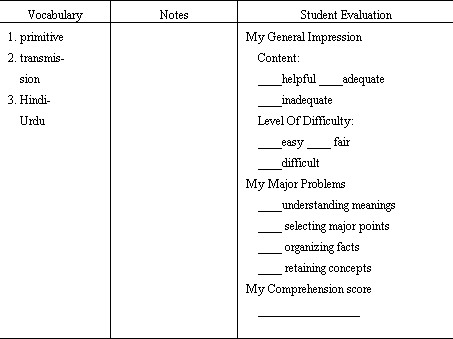step by step 第三册 lesson 104
时间:2018-12-27 作者:英语课 分类:英语听力入门 (全四册)
Lesson 104 Part Ⅰ
Lesson 104
Part Ⅰ Warming-up Exercises
Note-taking: History of the English Language
The words you may need for your note-taking in this drill: Caesar / Celtic people / Rome / Anglo-Saxon / Pope / Norsemen (vikings) / Norman
The first three are ____ influences:
1. 55 B. C. Caesar conquered __________________________
2. 43 B. C. Rome colonized 1 ____________________________
3. Romans remained__________________________________
The next significant dates were:
4._________________________________________________
5. From 500 on, West Germanic __________________________
Influences from other languages:
6. 6th and 7th centuries, England Christianized by _____________
(Latin continued)
7. 8th and 9th centuries, _________________________________
with Norse
8. 1066, Norman Conquest brought ________________________
9. French influence continued______________________________
10. 1500s and 1600s,___________________________________
Score: ____
Lesson 104 Part Ⅱ
Lesson 104
Part Ⅱ Language
Exercises:
Ⅰ. 1. Only man has the power of speech, and all men ______.
2. There are no people on earth whose language is _________.
3. Language makes it possible___________ between men and also ____ from father to son.
4. No one knows exactly ____or____ language first began.
5. There are probably about____ in the world today. ____is the language with the most speakers. ____,____,____ and ____ are also spoken by many millions of people. Some languages in the world have less than ____.
6. There are several important____ in the world. Most of the languages of Europe are in one large family called ____.
Ⅱ. A. Languages may be very different at different periods of history.
(Examples:__________________________________________)
B. Even at one particular point in time, a language may have numerous dialects based on
1. the geographical 2 location, (e. g._________________________ )
2. the education, (e. g. _________________________________ )
3. the sex, (e. g.______________________________________ )
4. the age of the speakers (e. g. __________________________ )
Lesson 104 Part Ⅲ
Lesson 104
Part Ⅲ How To Improve Your Study Habits
Exercises:
Outline
A. Plan your time carefully.
1. Make a list of things to do.
2. Make____________________________________
a. fill in committed time _________________________
b. decide on_________________________________
c. set aside _________________________________
d. set aside _________________________________
B.________________________________________
C.________________________________________
D.________________________________________
E. Study regularly.
1.________________________________________
2.________________________________________
3.________________________________________
F.________________________________________
- The area was colonized by the Vikings. 这一地区曾沦为维京人的殖民地。
- The British and French colonized the Americas. 英国人和法国人共同在美洲建立殖民地。
- The current survey will have a wider geographical spread.当前的调查将在更广泛的地域范围內进行。
- These birds have a wide geographical distribution.这些鸟的地理分布很广。

